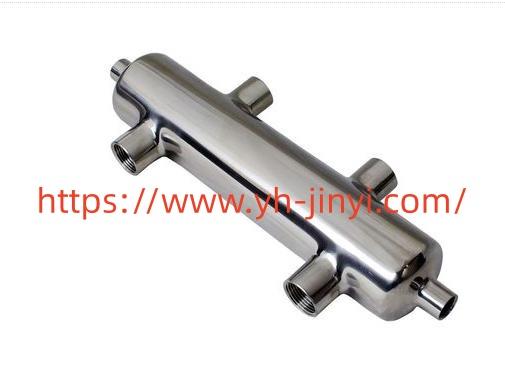Why Should JINYI Decoupling Tank Be Considered For Modern Systems

A Decoupling Tank is an essential component in modern building systems that separates primary and secondary circuits, helping maintain energy efficiency and stable hydraulic conditions. Proper use of this tank allows heating or cooling systems to operate with smoother flow, reduced pump workload, and improved overall system stability. Implementing this solution ensures that energy is distributed effectively, reducing waste and supporting consistent temperature control throughout the building.
One of the key advantages of this equipment is its ability to manage hydraulic separation. In complex systems with multiple heating zones or variable loads, the primary and secondary loops operate independently, preventing pressure fluctuations and unnecessary pump strain. This separation helps maintain smooth flow rates and reduces the risk of imbalances that could affect comfort and energy usage.
Another important factor is pressure stabilization. Circulation pumps operating without this intermediary component can encounter sudden changes in demand, causing spikes or drops that impact system performance. By incorporating a dedicated separation vessel, variations are absorbed, protecting pipes, valves, and heat exchangers from stress and potential damage. This also leads to a more consistent energy profile and minimizes mechanical wear over time.
System adaptability and flexibility are additional benefits. Large buildings often require varying temperatures or flow rates across different zones. The use of a properly designed separation unit enables each circuit to function independently, allowing precise adjustments without affecting the entire network. Facilities can optimize energy use, improve comfort, and easily accommodate expansions or retrofits without significant operational disruption.
Operational efficiency is further enhanced because pumps can operate at their optimal range. By minimizing turbulence and unnecessary cycling, energy consumption is reduced. This leads to cost savings, longer equipment life, and more predictable energy management. Sustainable buildings benefit particularly from this approach, as consistent hydraulic separation supports both performance and environmental goals.
Maintenance and reliability are also improved. Components that allow easy inspection, venting, and integration with existing piping reduce downtime and simplify routine servicing. High-quality solutions, such as those offered by JINYI, are engineered to maintain performance under variable conditions, ensuring dependable operation across heating and cooling applications.
In conclusion, integrating a separation device in building circuits can enhance hydraulic stability, support independent zone management, and improve overall energy efficiency. Selecting a well-designed product like the JINYI unit ensures reduced pump workload, consistent flow, and reliable operation. Buildings can achieve more predictable energy use, better occupant comfort, and long-term system reliability. Learn more about energy-efficient solutions at https://www.yh-jinyi.com/product/decoupling-tank/.
- Art
- Causes
- Crafts
- Dance
- Drinks
- Film
- Fitness
- Food
- Oyunlar
- Gardening
- Health
- Home
- Literature
- Music
- Networking
- Other
- Party
- Religion
- Shopping
- Sports
- Theater
- Wellness
